Oriental Art
 From Conservapedia
From Conservapedia Oriental art
A thing of beauty is always fresh, vital, principled, and divine.[1]
Some samples of its masterpieces:

At the State Hermitage Museum, over 180,000 items including paintings, sculptures and examples of applied art, give an idea of a remarkable cultural heritage of the Orient from the time of the ancient civilizations emergence to the present.[2] This oriental artworks occupy 50 rooms and contains pieces from Egypt, India, Iran (Sassanian), Tibet, Byzantium, and countries of the Near and Far East. The collection include silver filigree objects of the 17th - 19th centuries of China, India and South-East Asia, and Sassanian silverware (Ewers, dishes, etc.).
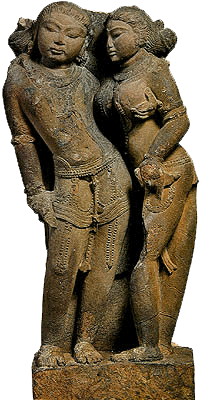

Ancient art in Asia was primarily expressed in the forms of stone carving, religious architecture, pottery, and bronze. [1]

Benares' temple in India.

Head with Ringlets and Earring, Eastern India.

Asking Her to Leave Her Noisy Anklets and Go Manaku of Guler, India.

Lady Carrying Fruits Ravi Varma, India.
"We are the same as plants, as trees, as other people, as the rain that falls. We consist of that which is around us, we are the same as everything. Your work is to discover your world and then with all your heart give yourself to it." Buddha.

Chinese painting

Chinese painting Yun Xin

Chinese painting

Chinese painting Mo Yun

Chinese painting Huo Kui
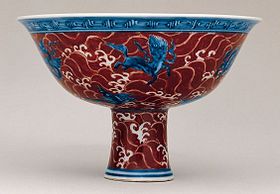
"The flower is a jumble of thighs, the sun's harem - the most oriental thing imaginable." Malcolm de Chazal.

A thousand arm Avalokiteshvara from Tibet

Embroidery with a Benedictory Motif Mongolia

Japanese Shikishi

Shaman Painting of The White Horse General Korea

Pachekabuddha Thailand
"A nice cottage. A clean table. A clear sky with a beautiful moon. A vase of flowers. No cares of the world." 15th century Chinese writer.[3]

A Girl by Lilies Vietnam

Yogi Purusa Nepal

Beaker Iran

Lebanese house Lebanon

Mosaic Israel
"Making contemporary art can throw up obstacles but it does not worry me. I am eternally optimistic; I am Chinese." Cai Guo-Qiang.
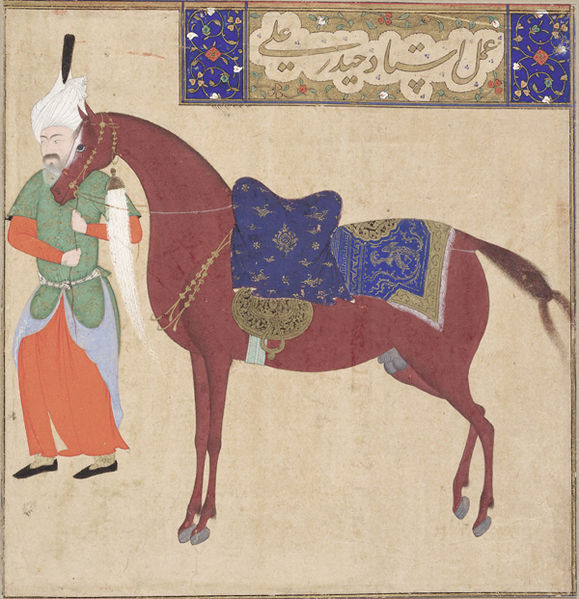
Horse and Groom, by Haydar Ali, early 16th century, Iran.
See also[edit]

- Japanese Painting
- Indian Painting
- Orient
- National painting
- Seas in art gallery
- History of painting
- Gallery of Jewish Painting

Dragons symbolize wisdom, virtue and strength.
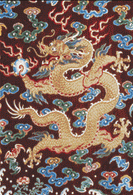

External links[edit]
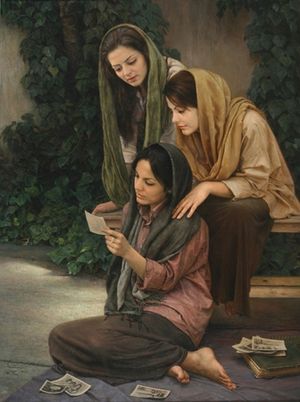
- Oriental art. State Hermitage Museum.
- Art in Southeast Asia Sweet Briar College, Virginia.
- East Asian art Harvard University.
- Oriental Sacred Art
- asia-art
- Indian Artists ARTCYCLOPEDIA.
- Chinese Artists ARTCYCLOPEDIA.
- Contemporary Chinese Art
- Introduction to the Art of Mongolia
- TIBET – Monasteries Open Their Treasure Rooms
- Pictures of Paintings of Buddha
- Highlights from the Collection: Iran The Oriental Institute, University of Chicago.
- IMAGES AND INFLUENCES OF ORIENTAL ART
- About the Asian collections. The Victoria and Albert Museum, London.


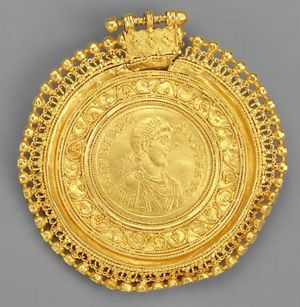
Framed medallion, Byzantine Empire, 500–700. Turkey.
References[edit]
- ↑ A THEORY OF ORIENTAL AESTHETIC By Kenneth K. Inada.
- ↑ Oriental art. State Hermitage Museum.
- ↑ Asian Art at the Met.



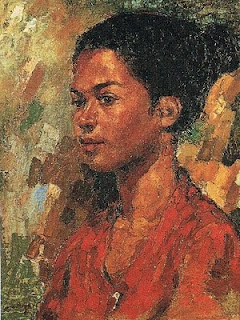
Mohd Hoessain Enas, Minah, 1958, Malaysia.
Categories: [Painting] [Art]
↧ Download as ZWI file | Last modified: 03/15/2023 14:23:48 | 61 views
☰ Source: https://www.conservapedia.com/Oriental_art | License: CC BY-SA 3.0
 ZWI signed:
ZWI signed: KSF
KSF